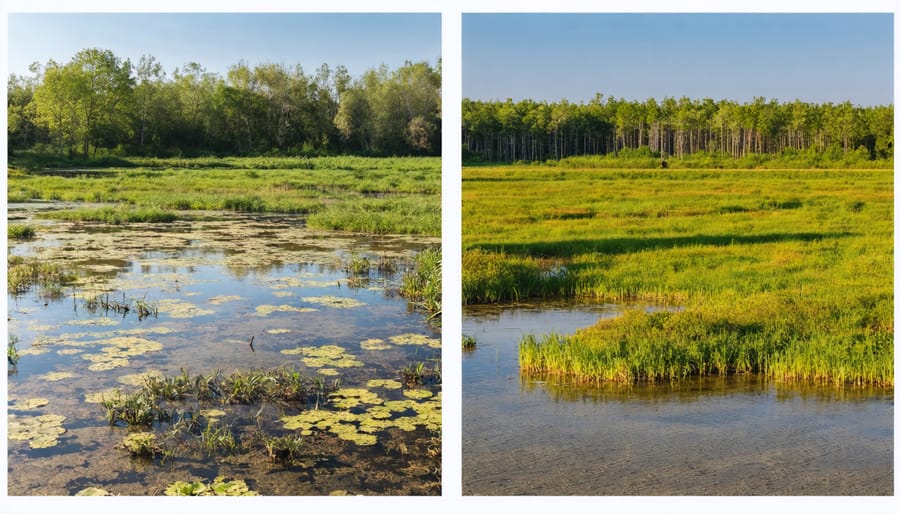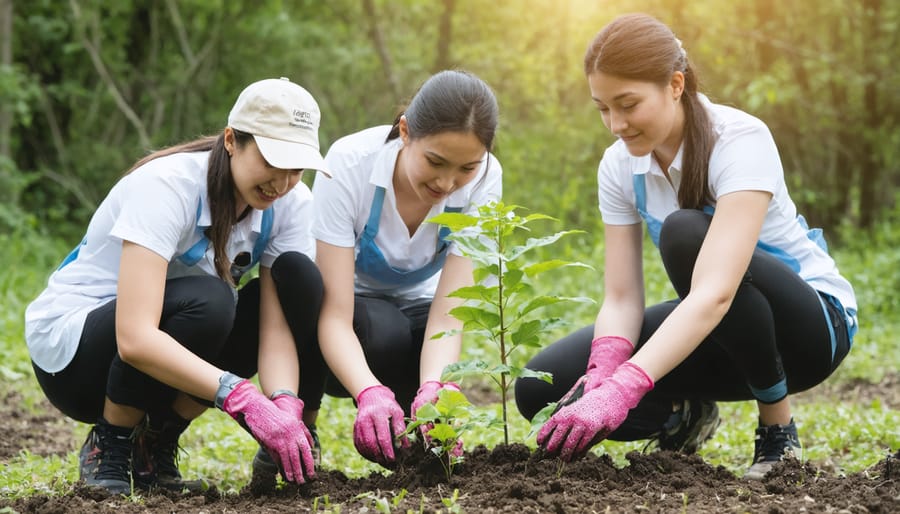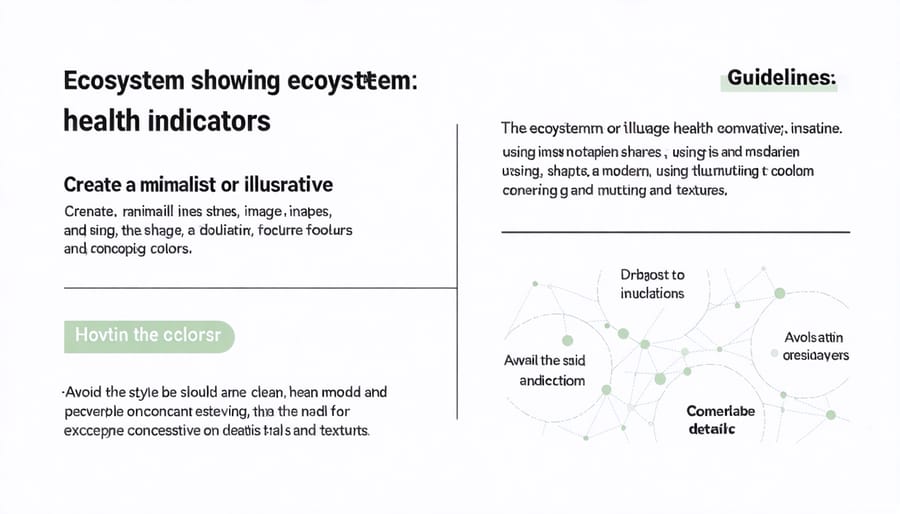Ecological restoration stands as one of Australia’s most powerful tools in healing our damaged landscapes and protecting our unique biodiversity. From the regeneration of fire-damaged bushland in the Blue Mountains to the revival of urban wetlands in metropolitan Melbourne, communities across the continent are working to repair and rebuild ecosystems that have been degraded, damaged, or destroyed by human activity.
This process goes far beyond simply planting trees or removing weeds. It’s a scientific, systematic approach that involves understanding complex ecological relationships, indigenous knowledge, and local environmental conditions to recreate self-sustaining natural systems. Whether restoring a patch of urban bushland or rehabilitating vast tracts of mining land, ecological restoration requires careful planning, community involvement, and long-term commitment.
As climate change continues to impact our landscapes, ecological restoration has become increasingly crucial for maintaining ecosystem services, protecting endangered species, and ensuring the resilience of our natural environments. Through strategic intervention and dedicated stewardship, we can help nature heal itself and create lasting positive change for future generations.
This comprehensive guide explores what ecological restoration means in the Australian context, why it matters, and how communities can effectively participate in restoration projects.
What Makes Ecological Restoration Different from Conservation?
Beyond Just Protecting: The Active Role of Restoration
Ecological restoration goes far beyond simply protecting what remains of our natural environments. It’s an active process that requires careful planning, dedicated effort, and ongoing commitment to rebuild ecosystems from the ground up. Drawing inspiration from indigenous land management practices, modern restoration projects work to recreate natural processes and relationships within damaged ecosystems.
Think of restoration as healing a wound – it’s not enough to just stop the bleeding; the body needs to actively repair itself. Similarly, ecological restoration involves rebuilding soil health, reintroducing native species, and re-establishing natural water flows. In many cases, this means removing invasive species, replanting endemic vegetation, and creating wildlife corridors that connect fragmented habitats.
Here in Australia, restoration projects often focus on reconnecting isolated patches of bushland, rehabilitating wetlands, and regenerating areas affected by mining or agriculture. These efforts don’t just preserve what’s left; they actively expand and strengthen our natural systems, creating more resilient landscapes that can better support both wildlife and human communities.
The Science Behind Ecological Recovery
The natural world has an remarkable ability to heal itself when given the right conditions and support. This self-healing process follows predictable patterns, starting with pioneer species that prepare the ground for more complex organisms. Like a cut that forms a scab before new skin grows, damaged ecosystems progress through stages of recovery, from soil improvement to the gradual return of native plants and animals.
In Australia, this process often begins with hardy native grasses and shrubs that can tolerate harsh conditions. These plants stabilise the soil, add organic matter, and create microhabitats for other species. Over time, they facilitate the return of larger plants and animals, creating a cascade effect that rebuilds the ecosystem’s complexity. Understanding these natural recovery patterns helps us work with nature rather than against it, making restoration efforts more effective and sustainable.
Community-Driven Restoration Success Stories
Urban Wetland Revival in Melbourne
In the heart of Melbourne’s eastern suburbs, a remarkable transformation has taken place that showcases the power of community-driven ecological restoration. The Blackburn Lake Sanctuary, once a degraded urban wetland, now stands as a thriving ecosystem thanks to dedicated local volunteers and strategic environmental planning.
Starting in 2015, local residents partnered with the Whitehorse City Council to protect our waterways and restore the wetland’s natural functions. The project began by removing invasive species like willow trees and installing native reed beds that naturally filter stormwater runoff.
Community members established regular working bees, where families and individuals could participate in planting indigenous species, monitoring water quality, and maintaining walking trails. Local schools became involved through educational programs, helping students understand the importance of healthy wetland ecosystems.
Today, the sanctuary supports diverse wildlife, including native birds, frogs, and insects. Water quality has improved significantly, and the wetland now helps manage urban flooding while providing a peaceful retreat for residents. The project’s success has inspired similar initiatives across Melbourne, demonstrating how urban communities can actively participate in ecological restoration while creating valuable green spaces for future generations.
Bushland Regeneration in Western Sydney
The transformation of Western Sydney’s Cumberland Plain Woodland showcases the remarkable impact of community-driven ecological restoration. Since 2018, local volunteers and environmental groups have collaborated to revive a 12-hectare patch of degraded bushland in Penrith, turning it into a thriving ecosystem.
This restoration project began with careful site assessment and weed management, focusing on removing invasive species like Lantana and African Olive that had choked native vegetation. Local community members, working alongside professional bush regenerators, implemented a staged approach to ensure sustainable recovery.
Through regular working bees and urban regeneration initiatives, volunteers planted over 5,000 native seedlings, including Grey Box eucalyptus, Native Blackthorn, and Kangaroo Grass. These species were carefully selected to match the original Cumberland Plain vegetation community.
The results have been inspiring. Native wildlife, including Sugar Gliders and Eastern Yellow Robins, have returned to the area. Ground-dwelling species like Blue-tongue Lizards are now regularly spotted, indicating a healthy ecosystem recovery. Local schools participate in educational programs at the site, fostering environmental awareness in younger generations.
This success story demonstrates how community commitment, combined with scientific knowledge and proper planning, can restore degraded urban bushland to its natural state. The project continues to serve as a model for other restoration initiatives across Western Sydney.
Getting Started with Local Restoration Projects

Assessment and Planning
Before any restoration work begins, a thorough assessment of the target area is essential. This involves documenting existing plant and animal species, soil conditions, water flows, and identifying key threats to the ecosystem. In the Australian context, this might include mapping areas affected by bushfires, invasive species like lantana, or examining the impacts of land clearing on local wildlife corridors.
Creating an effective restoration plan requires collaboration with Traditional Owners, local experts, and community stakeholders. Together, they establish clear goals and measurable outcomes, such as increasing koala habitat or improving water quality in local creeks.
The planning phase should consider practical aspects like seasonal timing, available resources, and long-term maintenance requirements. For instance, in Queensland, tree planting is often best scheduled before the wet season, while in Victoria, autumn plantings might be more successful.
A well-structured timeline helps track progress and adjust strategies as needed. Regular monitoring points should be established to measure success, whether that’s tracking native bird returns or measuring improvements in soil health. This data helps inform future restoration projects and ensures the best use of community resources.
Building Your Restoration Team
Building a successful restoration team starts with engaging your local community. You can join a revegetation group or create your own network of dedicated individuals who share your passion for environmental recovery. Look for neighbours, local schools, and community organisations who might be interested in participating.
Essential to any restoration project is the guidance of ecological experts. Consider partnering with:
– Local Indigenous knowledge holders who understand traditional land management
– Professional bush regenerators
– Environmental scientists or botanists
– Local council environmental officers
– Experienced landscapers familiar with native species
Don’t forget to connect with local Landcare groups, who often have established networks and valuable experience in restoration projects. They can provide training, tools, and support for your team members.
Remember, successful restoration teams blend enthusiasm with expertise. While some team members might be new to ecological restoration, others bring years of experience. This diversity creates a dynamic learning environment where knowledge is shared, and skills are developed naturally through hands-on work.

Funding and Resources
Securing funding for ecological restoration projects in Australia has never been more accessible. The Australian Government’s National Landcare Program offers substantial grants for community-based environmental initiatives, with funding rounds opening regularly throughout the year. Local councils across the country provide smaller grants specifically targeted at neighbourhood restoration projects, perfect for community groups getting started.
Environmental organisations like Greening Australia and Conservation Volunteers Australia offer both financial and practical support, including tools, expertise, and volunteer coordination. Many businesses also contribute through corporate social responsibility programs, providing either direct funding or in-kind support such as equipment and materials.
For Indigenous-led projects, the Indigenous Protected Areas program provides dedicated funding streams that recognise traditional ecological knowledge and cultural heritage values in restoration work. State-specific opportunities, such as Victoria’s Biodiversity Response Planning program and NSW’s Environmental Trust grants, offer additional pathways for funding.
Beyond financial support, local Landcare groups can provide valuable resources, including experienced mentors, shared equipment, and networking opportunities with successful restoration projects in your area.
Measuring Success in Ecological Restoration
Environmental Indicators
Monitoring the success of ecological restoration projects relies on several key environmental indicators that tell us how well an ecosystem is recovering. In our Australian landscape, these indicators include native plant diversity and coverage, which should show an increasing trend over time. The presence of local wildlife species, particularly native birds and small mammals, signals that the habitat is becoming more hospitable.
Soil health is another crucial marker, measured through organic matter content, moisture levels, and the presence of beneficial microorganisms. Healthy soils support stronger plant growth and better water retention, essential for our drought-prone regions. Water quality indicators, such as reduced turbidity and the return of aquatic species, help us track the health of restored waterways and wetlands.
The presence of indicator species – those particularly sensitive to environmental changes – can tell us volumes about ecosystem recovery. For instance, the return of native frogs to a restored wetland or the appearance of orchids in rehabilitated bushland shows that the wider ecosystem is flourishing. These living gauges help local communities and restoration practitioners measure progress and adjust their approaches for better outcomes.

Community Impact Assessment
Ecological restoration projects bring substantial benefits to local communities, extending far beyond environmental improvements. In Australian communities, these initiatives create valuable opportunities for connection, education, and shared purpose. Local restoration projects, such as the revitalisation of urban creeks in Brisbane or coastal dune rehabilitation along the Great Ocean Road, often become focal points for community gathering and learning.
The social benefits are particularly evident in Indigenous partnerships, where Traditional Ecological Knowledge enhances restoration outcomes while strengthening cultural connections. Community members report improved mental health and wellbeing through their involvement in restoration activities, citing the satisfaction of contributing to positive environmental change and building stronger neighbourhood relationships.
Economic advantages also flow to communities through increased tourism, enhanced property values, and new employment opportunities in restoration-related fields. For instance, the restoration of wetlands in regional Victoria has created sustainable ecotourism opportunities while protecting vital ecosystems. Schools often incorporate these projects into their curriculum, providing students with hands-on learning experiences in environmental science and community service.
Many local councils now recognise restoration projects as essential components of community development, integrating them into urban planning and social wellbeing strategies.
The success of ecological restoration lies not just in scientific expertise or technical solutions, but in the collective effort of our communities. Across Australia, from the coastal wetlands of Queensland to the bushlands of Western Australia, we’ve seen remarkable transformations when locals come together to heal their natural spaces.
These restoration projects do more than repair damaged ecosystems – they strengthen community bonds, create lasting connections to Country, and build a shared legacy for future generations. Whether it’s a neighbourhood group restoring a local creek, Traditional Owners sharing their knowledge of land management, or schools creating native gardens, every contribution matters.
You don’t need to be an environmental scientist to make a difference. Start by joining local conservation groups, participating in community planting days, or supporting indigenous land management initiatives. Even small actions, like creating habitat in your backyard or sharing knowledge with neighbours, contribute to the bigger picture of ecological restoration.
The time to act is now. Our unique Australian landscapes face unprecedented challenges from climate change, urbanisation, and habitat loss. But together, we can turn the tide. By combining traditional knowledge with modern conservation practices, and bringing together diverse community voices, we can create resilient, thriving ecosystems that benefit both nature and people.
Join the movement. Connect with your local environmental groups, learn about your area’s ecological needs, and become part of Australia’s restoration story. Your involvement today helps secure a healthier, more sustainable tomorrow for all.
